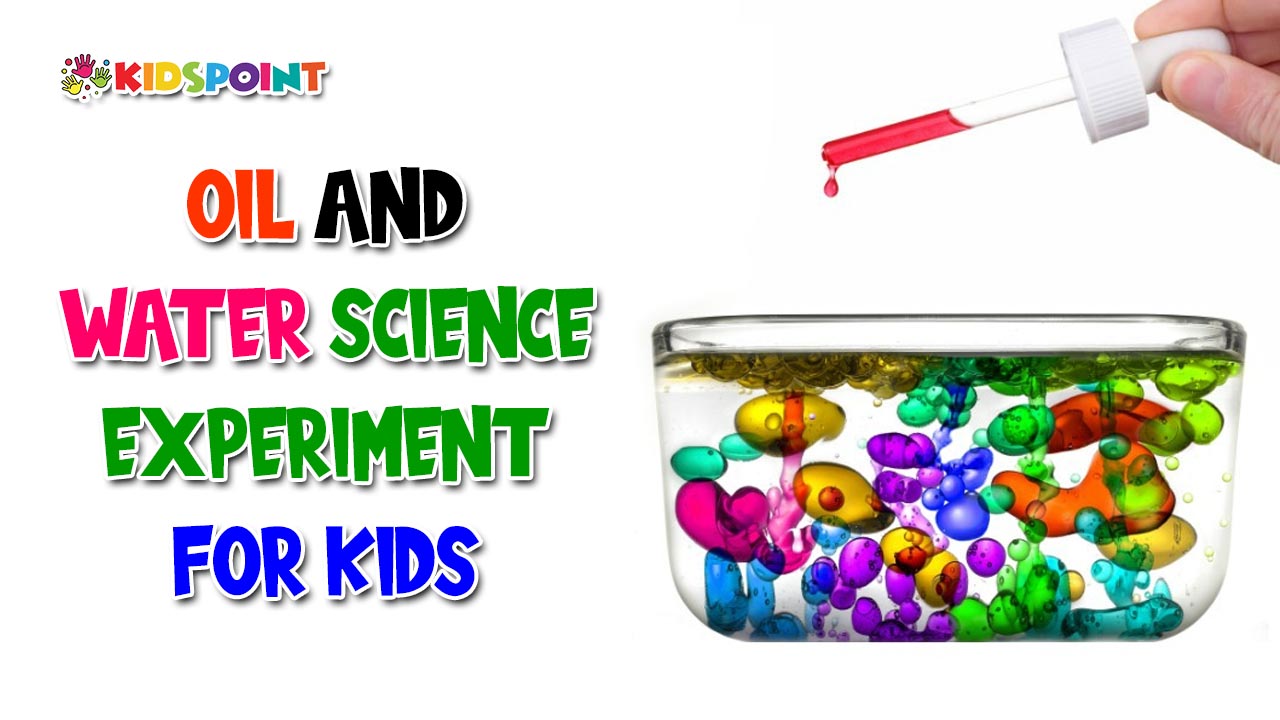The oil and water science experiment is a fascinating activity that introduces children to basic principles of chemistry and physics. Through this experiment, facilitated by The Kids Point, kids can observe firsthand how substances with different properties interact and behave when mixed together. This educational activity not only sparks curiosity but also helps children develop critical thinking skills as they analyze and interpret their observations.
What You Will Need
Before starting the experiment, gather the following materials:
- Vegetable oil
- Water
- Food coloring (optional)
- Clear glass or plastic containers (like jars or cups)
- Stirring utensils (spoons or sticks)
- Droppers or pipettes
- Dish soap (optional, for variations)
Understanding the Science Behind It
- Immiscibility: Oil and water are immiscible substances, meaning they do not mix together. This is due to their molecular properties; water molecules are polar, while oil molecules are non-polar. Polar molecules attract other polar molecules (like water attracting water), and non-polar molecules attract other non-polar molecules (like oil attracting oil). As a result, oil and water tend to separate rather than blend when mixed.
- Density: Density plays a role in the oil and water experiment as well. Density refers to how much mass is packed into a given volume. Water is denser than oil, which is why oil floats on top of water when they are mixed. This property allows children to observe distinct layers forming in the container during the experiment.
Conducting the Oil and Water Science Experiment
Now, let’s walk through the steps of conducting the experiment:
Step 1: Setting Up
- Fill a clear container with water, leaving some space at the top.
- In another clear container, pour vegetable oil until it forms a layer on top of the water.
Step 2: Observing the Layers
- Observe what happens when you pour the oil into the water. Notice how the oil forms a distinct layer on top of the water due to the difference in density.
- Discuss with the children why the oil floats on top of the water and why they do not mix.
Step 3: Adding Food Coloring (Optional)
- Add a few drops of food coloring to the water and observe how it interacts with both the water and the oil.
- Discuss why the food coloring mixes with the water but not with the oil, emphasizing the polar and non-polar properties of the substances.
Step 4: Experimenting with Stirring
- Use a stirring utensil to gently mix the oil and water together.
- Observe what happens when you stir and then stop. Notice how the oil and water begin to separate again into distinct layers.
Step 5: Adding Dish Soap (Optional Variation)
- Add a drop of dish soap to the oil and water mixture and observe the changes.
- Discuss why dish soap affects the interaction between oil and water, breaking up the oil into smaller droplets that can mix temporarily with the water due to its surfactant properties.
Learning Objectives
Through this experiment, children can learn:
- Basic Chemistry Concepts: Such as the properties of molecules, immiscibility, and density.
- Observational Skills: By observing and describing changes in the substances.
- Critical Thinking: By making predictions and analyzing outcomes based on their observations.
Extension Activities
To further enhance the learning experience, consider these extension activities:
- Floating and Sinking: Explore different objects (like coins or small toys) and predict whether they will float or sink in the oil and water mixture.
- Artistic Creations: Use the oil and water mixture to create colorful artwork by carefully pouring it onto paper and letting it dry.
- Variations with Temperatures: Investigate how temperature affects the behavior of oil and water. Does heating or cooling the mixture change the way they interact?
The oil and water science experiment, facilitated by The Kids Point, is a simple yet effective way to introduce children to fundamental principles of chemistry and physics in a hands-on, engaging manner. By exploring concepts like immiscibility and density through observation and experimentation, kids not only deepen their understanding of science but also cultivate a lifelong curiosity about the world around them. This activity encourages creativity, critical thinking, and a love for learning through exploration.


